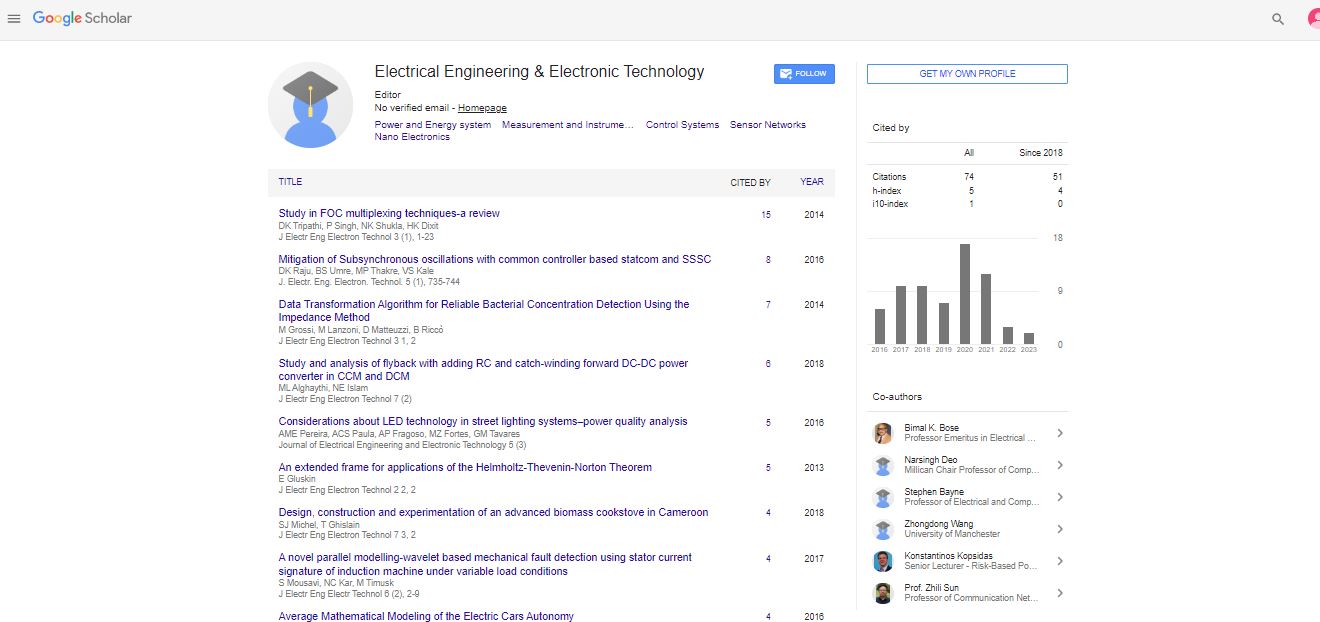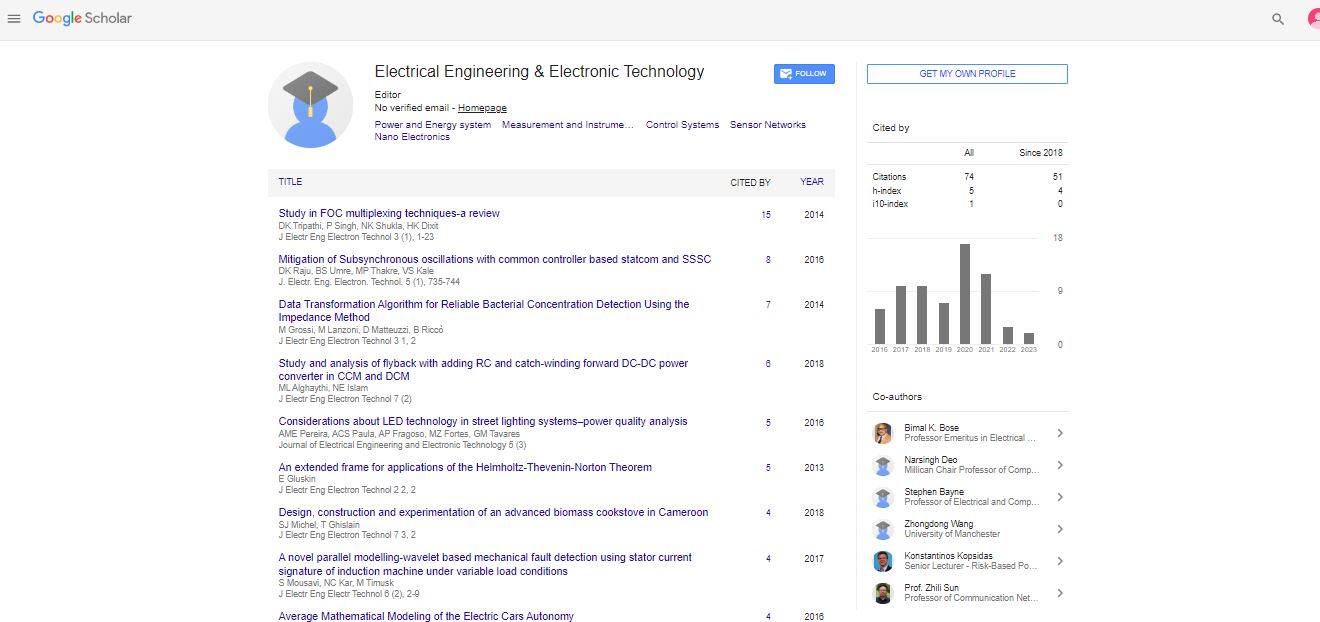Research Article, J Electr Eng Electron Technol Vol: 7 Issue: 2
Microwave Characterization of Silicon Carbide Sample at the ISM Band from 25°C to 165°C
Rammal W1, Rammal J2*, Salameh F2, Taoubi M1, Fouany J3, Alchaddoud A4 and Canale L4
1Faculty of Sciences, Lebanese University, Lebanon
2Technology Department, MUC University, Lebanon
3XLIM, Limoges University, 125 Avenue Albert Thomas, France
4LAPLACE Laboratory Toulouse University, 118, route de Narbonne Toulouse, France
*Corresponding Author : Rammal J
Technology Department, MUC University, Lebanon
Tel: + (961) 81773172
E-mail: jrammal@muc.edu.lb
Received: June 25, 2018 Accepted: July 10, 2018 Published: July 17, 2018
Citation: Rammal W, Rammal J, Salameh F, Taoubi M, Fouany J, et al. (2018) Microwave Characterization of Silicon Carbide Sample at the ISM Band from 25°C to 165°C. J Electr Eng Electron Technol 7:2. doi: 10.4172/2325-9833.1000160
Abstract
This article presents a microwave characterization at the ISM band (2.45 GHz) for the dielectric properties of a Silicon Carbide sample with high loss tangent from 25°C to 165°C. Different techniques were used to characterize the SiC sample: the cylindrical resonant cavity technique in transmission and reflection mode, the microstrip ring resonator and finally the near field microwave microscopy. The results obtained by the cylindrical resonant cavity (transmissionand reflection) are in good agreement, the relative permittivity and the loss tangent of the SiC increase with temperature by 48% and 190% respectively between 25°C and 165°C. These techniques are accurate but need two thermal cycles. The results obtained by the microstrip ring resonator are less accurate than the resonant cavity and the low quality factor (Q0=2.5) does not allow to correctly determine the imaginary part of the permittivity and consequently, the loss tangent. Finally, the near field microwave microscopy technique shows an accurate measurement with low uncertainties in the real (<2%) and imaginary part (<5%) of the permittivity. These results are in good agreement with the resonant cavity techniques, however this technique needs just one thermal cycle which allows saving time during the measurements.
 Spanish
Spanish  Chinese
Chinese  Russian
Russian  German
German  French
French  Japanese
Japanese  Portuguese
Portuguese  Hindi
Hindi 
